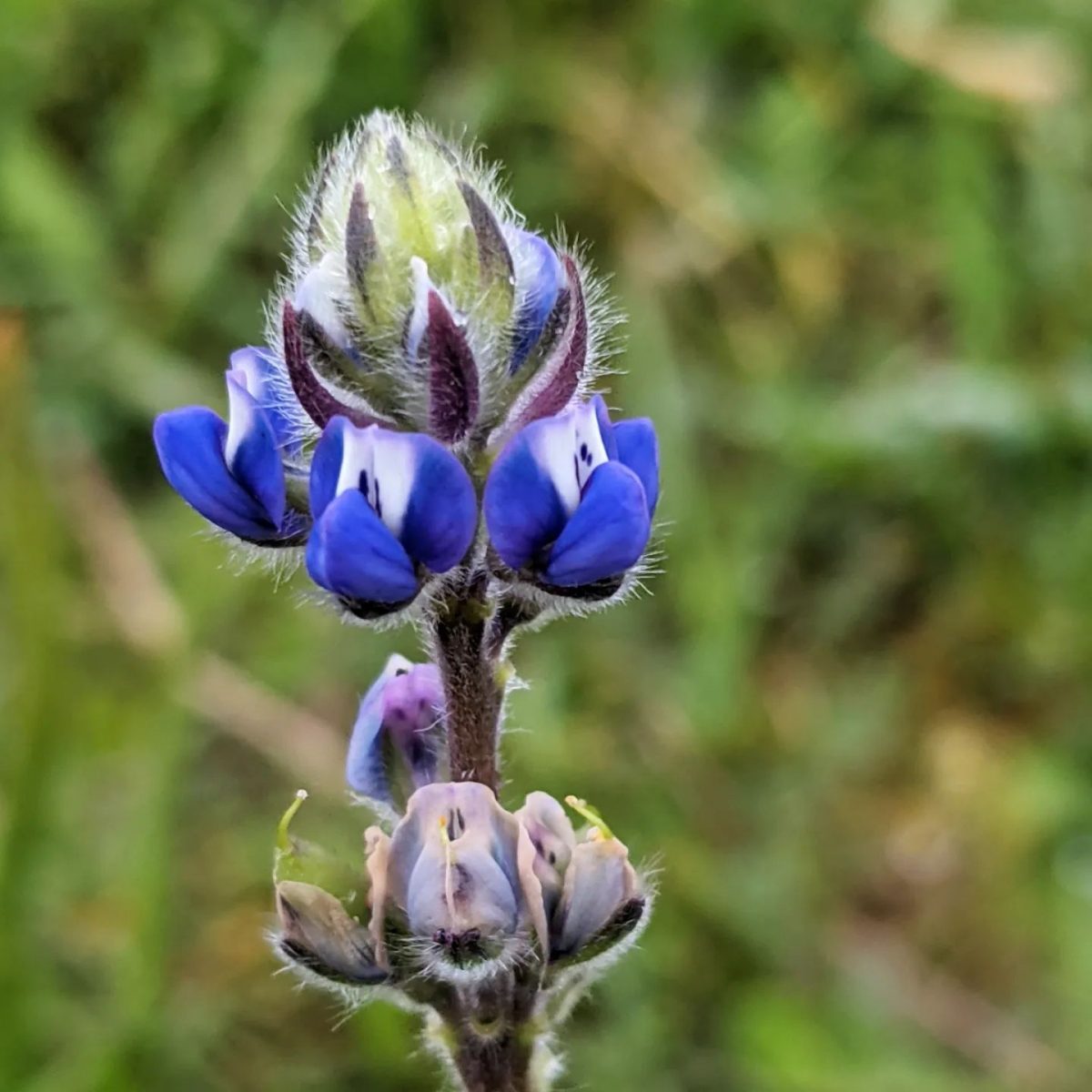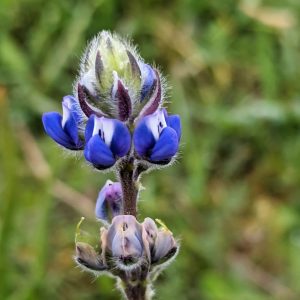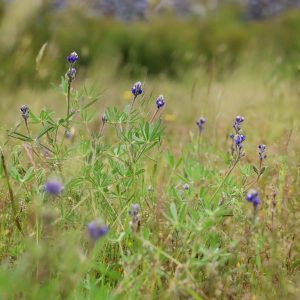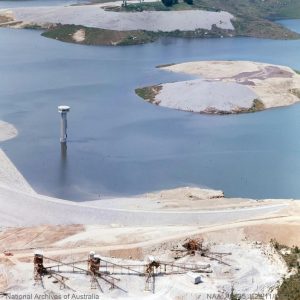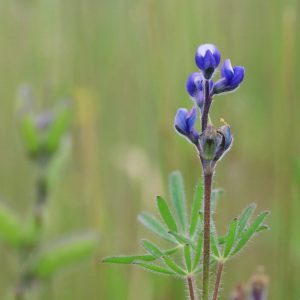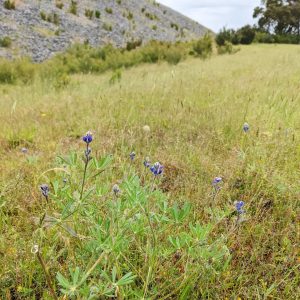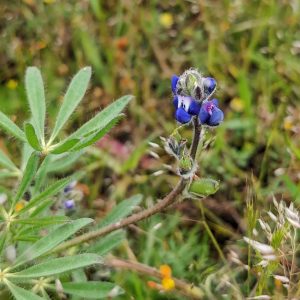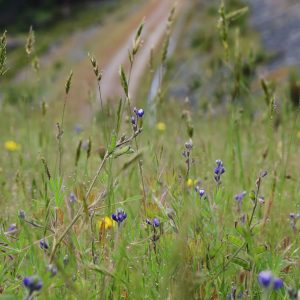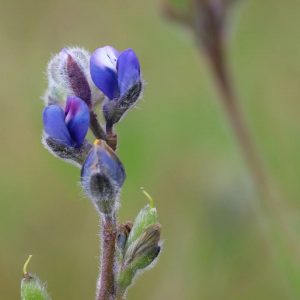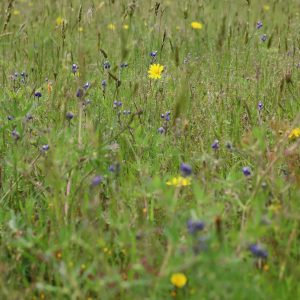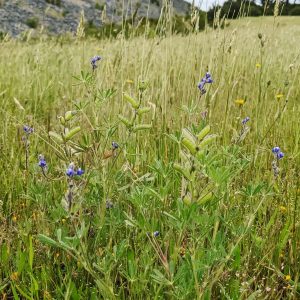Miniature Lupine (Lupinus ?bicolor), a tiny Californian lupine growing within incipient rip rap foothills meadow at Melbourne’s Cardinia Reservoir and apparently nowhere else in Australia.
Events established this diminutive pea in an engineered drainage saddle below a massive rockwall holding 287 billion potable litres. That rockbank was heaved up in the 1970s, shavings from ridges of Lysterfield Granodiorite that once nestled Cardinia Creek and Crystal Brook. Upper reaches drowned, lower reaches still tracing between fingers of remnant native woodlands. And in between the weird.
How do you make a home for the obscure? Crack and crush a million tonnes of granitic rock into a skeletal couloir irrigated year-round with water coming down and through the rock. You can imagine a soil composition and chemistry with not so many comparables in the metropolitan. Cover with grasses and leave it to the roos.
The rockier stuff further up is now dominated by big swathes of Spanish Heath, shining like fresh snow in the early spring. The bottomland picnic lawns are rosey-cheeked acres of Red Tarweed. Pelisser’s Toadflax springs from road shoulders and anywhere else the lawns grow sparse. But in this weird below the rockbank, where there are only the roos, this is where the Lupine grows alongside Pimpernels, Bartsia and native onion orchids.
How do you get a Lupine to this spot? That’s the real mystery. These are annuals that produce small numbers of heavy seeds; the three species naturalised in Victoria are larger plants brought for gardens or cropping. This tiny plant seems to have arrived a different way, contaminating equipment, materials, boots or grass mix, and may be among the first accidental introductions from California since gold rush days.
The ID is tentative. We don’t otherwise have Miniature Lupine in Australia, and neither do we have its closest keyed comparable, Sky Lupine (L. nanus). Californians on iNat are pretty certain now that this is L. bicolor, but the differences are a subject for haggling. A substantial renewal of the dam wall is planned for 2024/2025.
View Original Post on Instagram
Search for information about Lupinus ?bicolor in the Flora of Victoria
View information and occurrences of Lupinus ?bicolor on the Atlas of Living Australia
